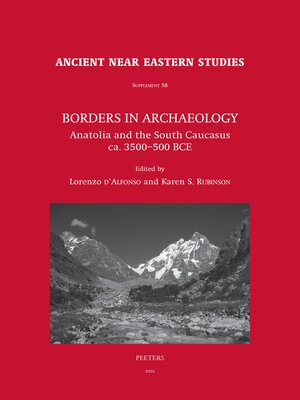Borders in Archaeology
ebook ∣ Anatolia and the South Caucasus ca. 3500-500 BCE · Ancient Near Eastern Studies Supplement Series
By L. d'Alfonso

Sign up to save your library
With an OverDrive account, you can save your favorite libraries for at-a-glance information about availability. Find out more about OverDrive accounts.
Find this title in Libby, the library reading app by OverDrive.



Search for a digital library with this title
Title found at these libraries:
| Library Name | Distance |
|---|---|
| Loading... |
This volume is devoted to the search for borders in archaeology and takes as a case study the archaeology of Anatolia and the South Caucasus in the Bronze and Iron Ages. Up until the mid-first millennium BCE, these regions differ in interregional and macro-regional interactions, political complexity, economic and mobility strategies, and communication of identities, among which is the use and spread of writing through time. They are united by their representation in ancient sources and modern literature as borderlands. These features represent the core of the discussion developed in the volume. Chapters include theoretical discussion of borders and boundaries, and regional investigations of the Early, Middle and Late Bronze Age (Assyrian colony period, Hittite empire in Anatolia, Kura-Araxes, Trialeti-Vanadzor, Van-Urmia and other traditions in the South Caucasus), the Early Iron Age and Middle Iron Age (Troy, Phrygia, Urartu), until the unification under the Achaemenid Empire. They offer a balanced interplay between site-based investigations and landscape archaeology in Armenia, Azerbaijan, Georgia and Turkey.







